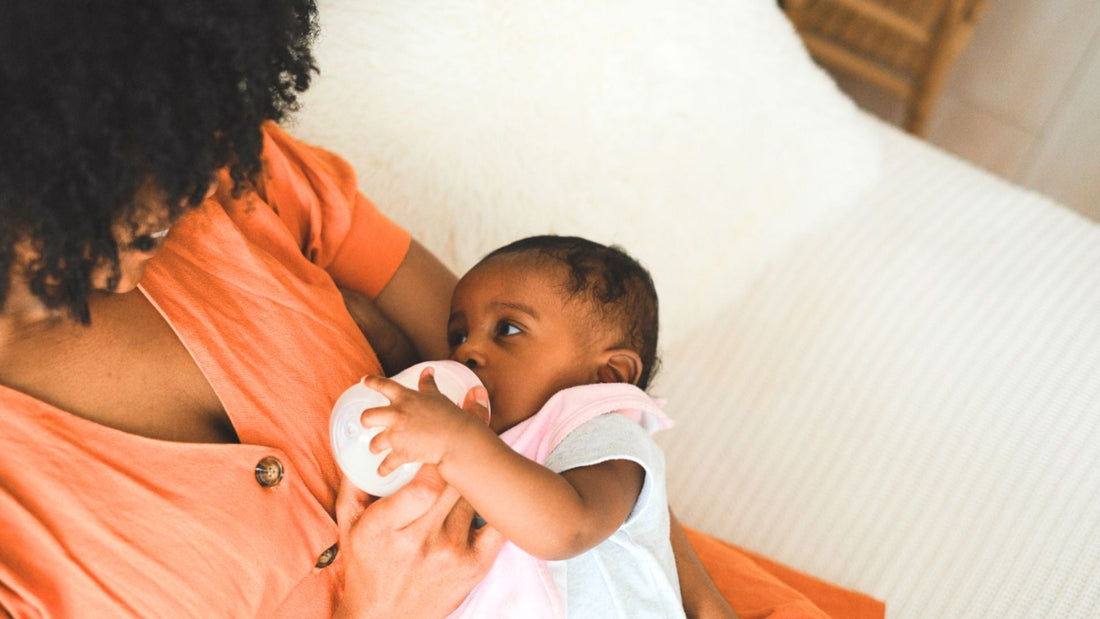
Glass vs Plastic baby bottles
Hey mama, buying all of your baby essentials for the first time can be a minefield. There are so many options, research to be done.. And the clock is ticking! So let us help you with one big topic - glass vs plastic baby bottles.
Here are the 4 key things you should take into consideration when making the right decision for you and your baby on glass vs plastic baby bottle options:
- Durability
- Toxins
- Sterilization
- Usability
How long do baby bottles last?
Baby bottles are expensive so it's important to get bottles that last as long as possible, after all your baby will be using these all day every day until at least the age of 1.
Plastic baby bottles are prone to scratches, which become spaces for bacteria to live so it is recommended they should be replaced every 3-6 months.
Glass baby bottles are more durable as they do not pick up scratches as easily so you can reuse them endlessly and can last for years with proper care.
Do baby’s get exposed to toxins through their bottle?
Recent studies show that using plastic baby bottles exposes infants to thousands of particles of microplastics per day. This is due to the method of high temperature sterilization needed for plastic baby bottles after each use and also shaking the bottle with hot milk in to mix it, both of these methods release microplastics into the milk.
Since glass baby bottles resist chemicals and emit no microplastics or toxins, they do not pose any of the above risks to your baby and so glass baby bottles win on this one, every time.
What is the difference in sterilization between the two?
In line with NHS guidelines, all baby bottles must be sterilized before and after each use because bottles that store / are used for milk can become breeding grounds for bacteria.
A baby’s immune system is not as well developed as an adults so they could become very ill if they drink out of a bottle that is contaminated with bacteria. Sterilizing your baby’s bottles kills the majority of bacteria.
Plastic baby bottles require high temperatures to sterilize in the form of a steam sterilization due to plastic bottles breaking down and scratching over time, making it more likely for milk residue to stick around after feeding. This usually means a higher upfront cost and more storage needed in the form of a sterilization machine.
Glass baby bottles are easier to clean with less equipment and can easily be sterilized using warm water and baby bottle wash as well as a little bit of boiling water for the nipples. Glass baby bottles do not require high temperatures to sterilize due to the durable glass material being less likely to hold on to milk residue. This means less upfront costs and storage because there is no need for a sterilization machine!
Which bottle types are easier to use?
In today's world of convenience, plastic baby bottles are the market leader for most mama’s because of their ease of use. They are lightweight and easy for infants to practice holding themselves without the risk of dropping / smashing.
However, glass baby bottles have adapted over the last few years to slowly gain popularity again given all of the other benefits that outweigh using plastic. Glass baby bottles can break with intense force. However, borosilicate glass is more durable and harder than regular glass which is what most glass baby bottles are made out of today. A lot of brands have also designed nice fashionable shatter resistant bottle cases to go with them. They are slightly heavier than plastic baby bottles making them a little harder for infants to practice holding themselves and takes a little more practice.
Remember, every baby is different, so it's essential to pay attention to your baby's preferences when bottle feeding and seek professional medical help if you have any concerns over feeding. You know your baby better than anyone and what works for you.
Check out our baby feeding range for some great glass bottle options.
L U X U R Y M A M A
